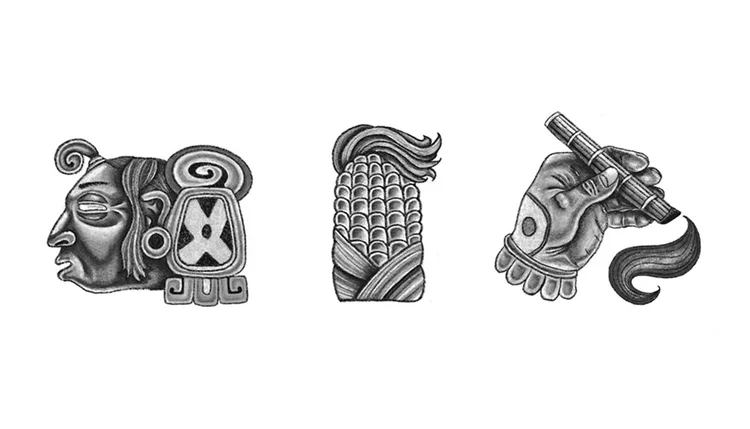Mundo Mesoamericano - 25” W x 18” H Pencil on Paper
This drawing is a glimpse into the interconnectedness of Mesoamerican cultures. It hints at the complex relationships between cities like Tikal in Guatemala and Teotihuacan in Mexico and highlights the shared reverence for celestial bodies like the sun and moon. The detailed imagery and symbolic elements offer a rich field for interpretation and further exploration of Mesoamerican beliefs and practices.
Teotihuacan's influence was significant in Mesoamerica during the Classic period (around 250-900 AD), and Tikal was one of the major Mayan cities that felt its impact.
This influence wasn't just artistic; it likely involved political and economic ties as well.
The prominent position of the sun at the top suggests its overarching importance. Its radiating lines symbolize its power and life-giving energy.
I chose to draw a Jaguar for the position of immense power and symbolism in Mesoamerican cultures they represented. Revered as apex predators, they represented strength, courage, and the supernatural. Often associated with rulers, warriors, and deities, jaguars were depicted in art, sculpture, and religious iconography, signifying power, both earthly and spiritual. Their presence permeated Mesoamerican cosmology, embodying the forces of nature and the mysteries of the night.
In this drawing, two representations moon goddess are featured in the sky:
Mayan Moon Goddess:
The Mayan moon goddess is traditionally known as Ixchel. She is often depicted with:
Attributes: A serpent headdress, weaving implements, and sometimes rabbit imagery (rabbits were believed to be associated with being on the moon).
Associations: She was associated with childbirth, weaving, medicine, and the moon's cycles. She was considered a powerful goddess linked to fertility and the earth.
Aztec Moon Goddess:
The Aztec moon goddess is typically known as Coyolxauhqui. Her story is quite different from Ixchel's:
Myth: Coyolxauhqui was the daughter of Coatlicue (earth goddess) and was killed and dismembered by her brother Huitzilopochtli (sun god). Her story is tied to the cycles of the moon and the conflict between light and darkness.
Depiction: She is often depicted with bells on her cheeks, feathers, and sometimes dismembered or in the process of being dismembered.
Teotihuácan, MX - Pyramid of the Sun Photo: De Agostini/Getty Images
The Great Plaza at Tikal, Guatemala, with stelae (foreground), the Temple of the Jaguar (left), and the Palace of the Nobles (right) Photo by: Josef Muench
Ixche: Maya moon goddess, Classic period SourceFrancis Robicsek: The Maya Book of the Dead. The Ceramic Codex, University of Virginia Art Museum (1981).
Coyolxauhqui at the National Museum of Anthropology, Mexico City, Mexico, Photo: Carlos Yo





